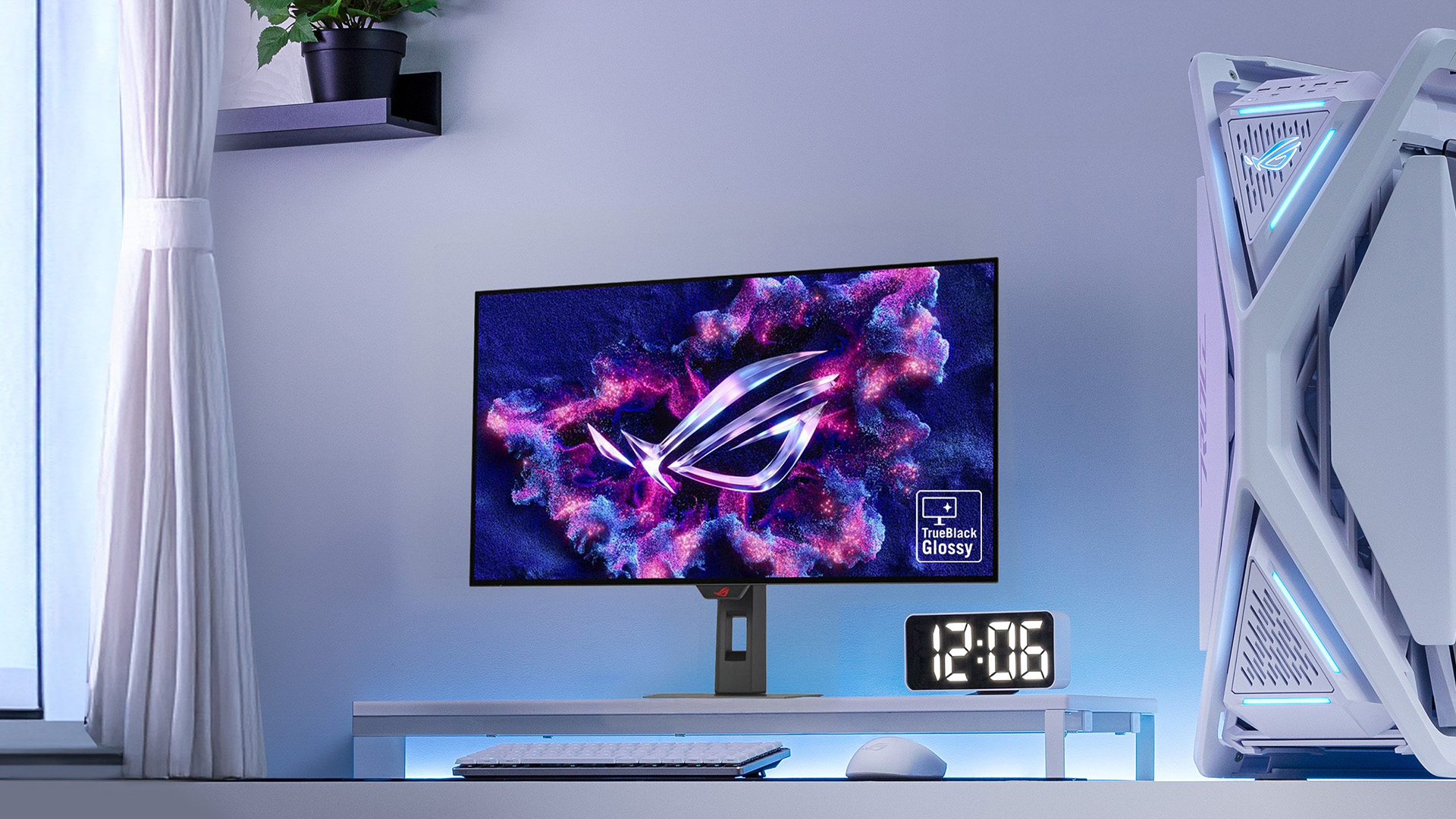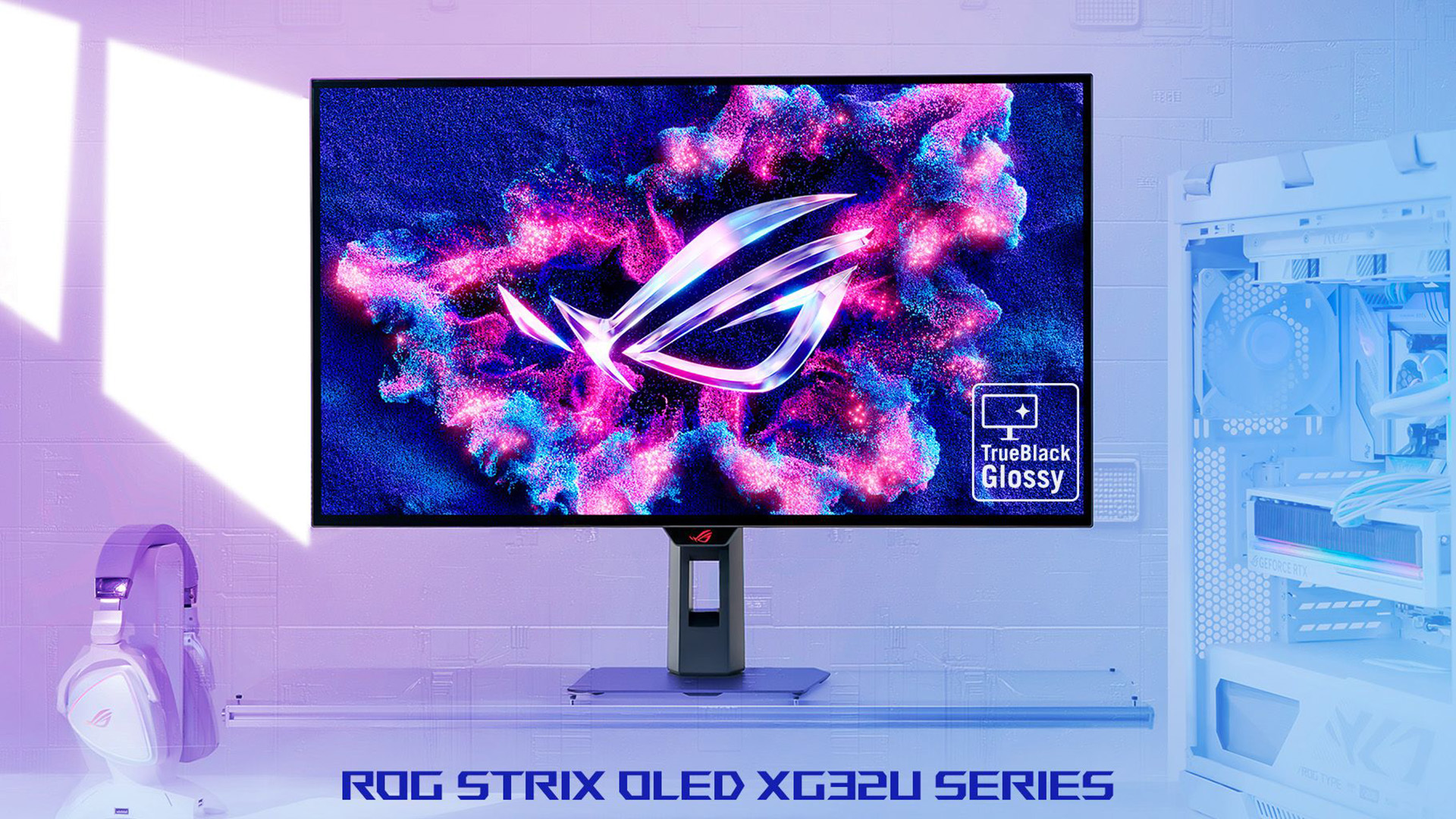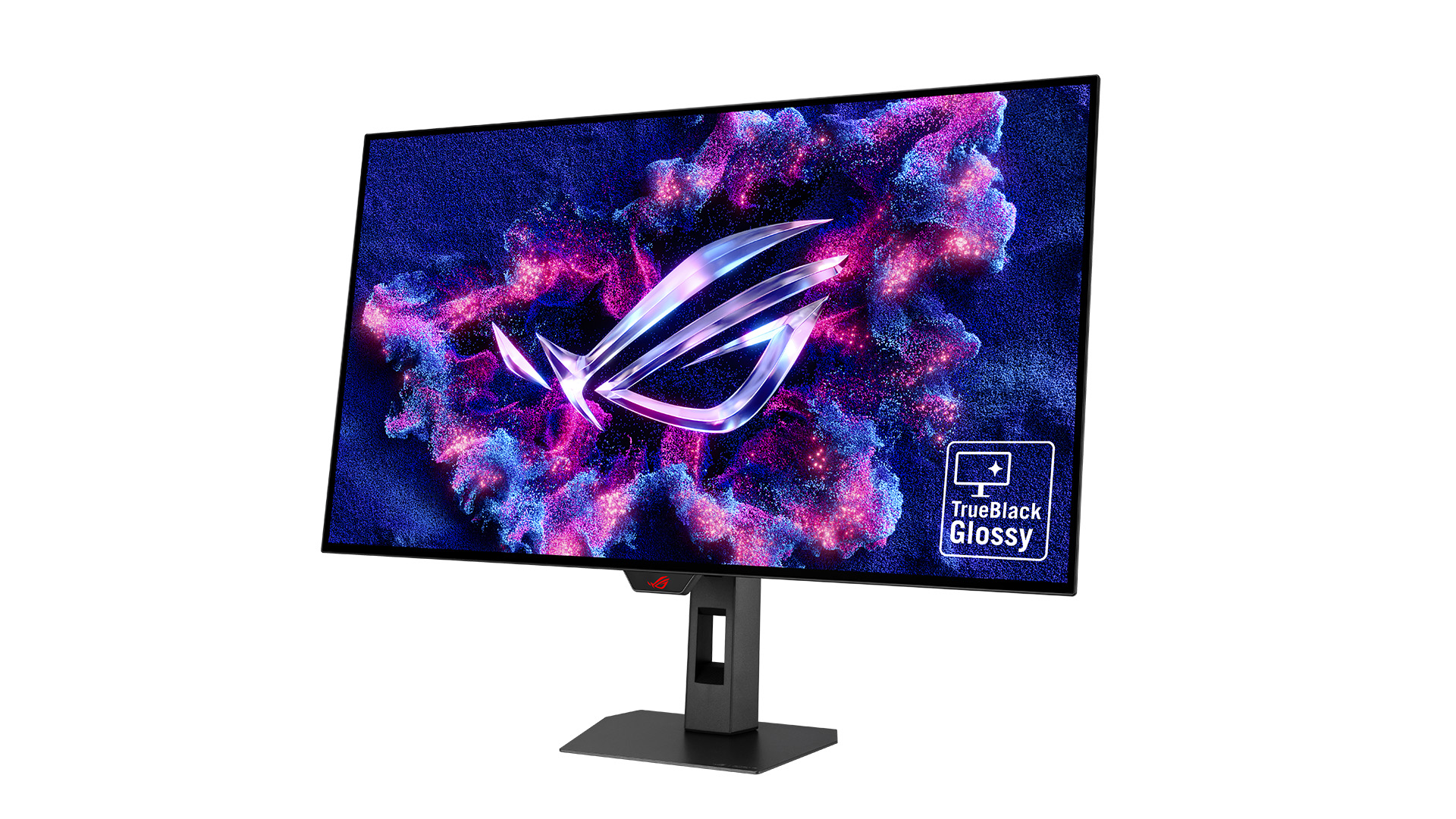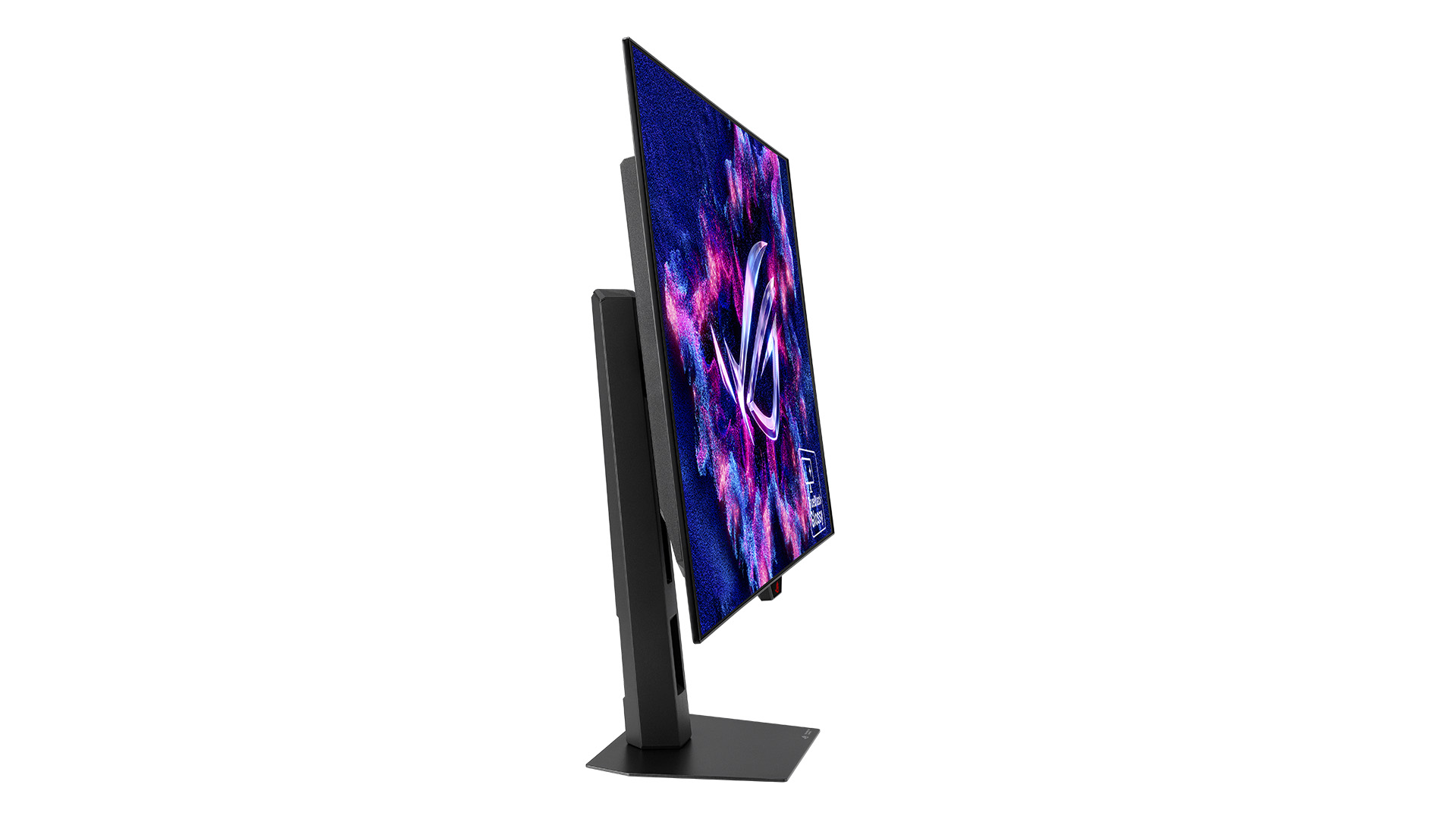Asus's new ROG Strix 32-inch dual-mode WOLED monitor adapts to fit your gaming needs – 240Hz at 4K or 480Hz at 1080p
The ROG Strix OLED XG32UCWMG and the XG32UCWG feature glossy WOLED panels with improved anti-reflective coating.

Asus has announced its latest 32-inch gaming monitors, which could potentially make our best OLED gaming monitors list. Both the ROG Strix OLED XG32UCWMG and the XG32UCWG are claimed to be the world’s first monitors to feature glossy 4K WOLED panels. The monitors also come with dual mode functionality, allowing them to drop down the resolution to 1080p and bump up the refresh rate for competitive FPS-focused gaming.
While they look identical, the XG32UCWMG is the more premium option, as it can operate at up to a 240 Hz refresh rate at native 4K (3840x2160) resolution and up to 480 Hz at 1080p. As for the XG32UCWG, it can achieve 165 Hz at 4K and up to 330 Hz at 1080p. Expect excellent response times of up to 0.03 ms (gray-to-gray) on both monitors, which is a well-known advantage of modern OLED displays. Additionally, both monitors support AMD FreeSync Premium Pro and Nvidia G-Sync variable refresh rate technologies.



With support for HDR10, the monitors can reach up to 1,300 nits of peak brightness and cover up to 99% of the DCI-P3 color gamut. According to the company, the new ROG displays will feature a TrueBlack Glossy film with a zero-haze optical layer and an anti-reflective stack. This reduces screen glare by 38% compared to older glossy OLED panels. The film helps to ensure deeper blacks, even if you have bright lights shining in your room. Additionally, Asus is making use of a Clear Pixel Edge algorithm, which aims to address a common issue with OLED-based monitors where text can sometimes appear blurry or have color fringing due to their sub-pixel layout.
In terms of connectivity, both monitors will feature two HDMI 2.1 ports, a DisplayPort 1.4 (DSC), a USB Type-C port with 15-watt power delivery, three USB 3.2 Gen 1 Type-A ports, and a headphone jack. There is also a built-in auto KVM feature that allows for switching between two connected PCs or laptops using a single keyboard and mouse. Additionally, Asus has reworked the monitor stand, which offers full tilt, swivel, and height adjustments but with a 45% smaller footprint compared to older 32-inch ROG OLED monitors.
To help protect the OLED panel from potential burn-in and extend its lifespan, both monitors come with an OLED Care Pro suite, which occasionally refreshes pixels and shifts images to avoid static elements staying in one place for too long, and automatically reduces the brightness of logos and other fixed areas on the screen. There is also the Neo Proximity sensor, which can detect when you step away from the monitor. Once it senses you're gone, the screen dims automatically to protect the panel, and it instantly lights back up when you return.
Pricing is still under wraps, but Asus is offering a three-year burn-in warranty with every XG32U series monitor.
Follow Tom's Hardware on Google News to get our up-to-date news, analysis, and reviews in your feeds. Make sure to click the Follow button.
Get Tom's Hardware's best news and in-depth reviews, straight to your inbox.

Kunal Khullar is a contributing writer at Tom’s Hardware. He is a long time technology journalist and reviewer specializing in PC components and peripherals, and welcomes any and every question around building a PC.
-
Tanakoi "Dual mode functionality"? Every monitor I've purchased since the 1980s supports both multiple resolutions and varying refresh rates.Reply -
uplink-svk Reply
That worked for CRT monitors, yes. LCDs are limited by pixel clock and pixel latency. Pixel latency reprezents time it takes for the state of pixel matrix to change from 1 to 0 , states in between, and vice versa. Thus this "Dual Mode" is kind of cool, since it works with non-interlaced image, but on a significantly smaller portion of the screen . WOLED panels wirh this fw feature utilizenpossible higher pixel clock and pre-existing low latency due to smaller screen size while being cooled by the same cooling apparatus as whole 31,5". I mean the screen itself is not cooled, just the powering array, but on these bad boys even the matrix itself is being cooled so that's cool - pun intended.Tanakoi said:"Dual mode functionality"? Every monitor I've purchased since the 1980s supports both multiple resolutions and varying refresh rates. -
Notton The real magical panel I want to see is something that handles both 4K and 2.5K with lossless scaling.Reply
Yes, I am aware that would result in a 23040x12960 screen. (3840*6=2560*9)
The next closest pair is 4K and 2.8K, or a 11520x6480 screen (3840*3=2880*4) -
Tanakoi Reply
I repeat: I've never purchased a monitor since the 1980s -- LCDS included -- that didn't support multiple resolutions and refresh rates. The monitor I type this on supports 7 different refresh rates at it's maximum resolution .... drop down to a lower resolution and it supports 11.uplink-svk said:That worked for CRT monitors, yes. LCDs are limited by pixel clock and pixel latency. -
JayGau Reply
Any monitors "support" multiple resolutions and refresh rates below their max. But those resolutions are not native. Setting a 1080p resolution on a 4k monitor doesn't give a good image quality (it looks blurry since the monitor is not designed to display that and has to "fake" it). Those dual resolution/max refresh rate monitors are designed to display a native-like image quality at both resolutions.Tanakoi said:I repeat: I've never purchased a monitor since the 1980s -- LCDS included -- that didn't support multiple resolutions and refresh rates. The monitor I type this on supports 7 different refresh rates at it's maximum resolution .... drop down to a lower resolution and it supports 11. -
JayGau Can we get a release date for those two models? I couldn't find anything, not even on the Asus website. It's like nobody wants to say when they gonna be available.Reply -
uplink-svk Reply
With all due respect, not sure whether You're so dense, or trolling right now. Which part of "the monitor runs at 240 Hz native and 480 Hz in special mode" do You NOT understand? The maximum refresh rate of the monitor is 240 Hz, at all resolutions, period. In custom 1080p, where panel matrix renders image in the middle of the OLED array, pixels can be ramped up to 480 Hz thanks to superior cooling of the whole panel matrix. You can run the panel in 240 Hz at 1080p in normal mode as non-native resolution at full screen. It'll work just fine, where it'll interpolate 4 pixels, two above and two below in one pixel and link them with one data signal. In special mode it renders the image in native resolution at 24 - 27" at smaller image area while utilizing a cooling capacity of whole aparatus.Tanakoi said:I repeat: I've never purchased a monitor since the 1980s -- LCDS included -- that didn't support multiple resolutions and refresh rates. The monitor I type this on supports 7 different refresh rates at it's maximum resolution .... drop down to a lower resolution and it supports 11.
You can't run any ordinary LCD panels above their rated/max. theoretical specs, no matter what, while at these dual-mode panels You can. It's not Your regular switching of the resolution and increasing/lowering the refresh rate of the whole array matrix.